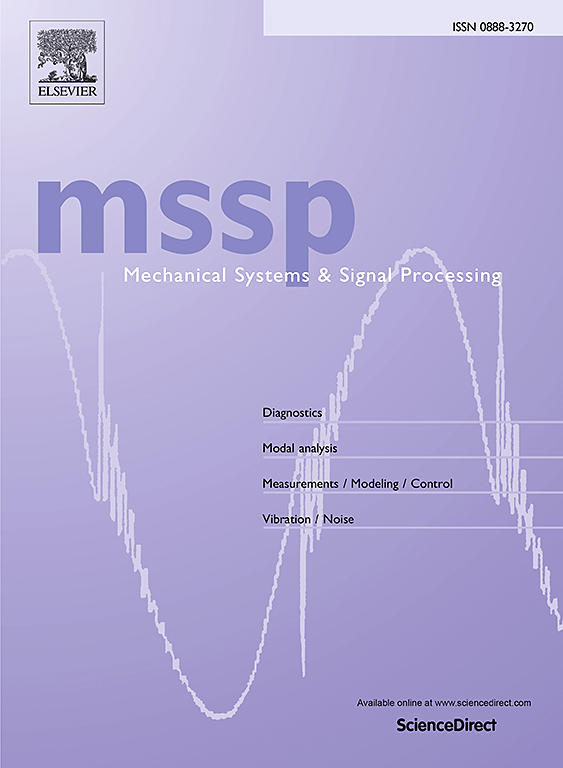探索3D打印技术的改进型粘弹性阻尼器设计
IF 8.9
1区 工程技术
Q1 ENGINEERING, MECHANICAL
引用次数: 0
摘要
基于粘弹性阻尼器的减振技术早已被用于解决各种工业问题。尽管如此,寻求提高这些阻尼器的有效性仍然是一个活跃的研究课题。通常,必须处理更复杂的阻尼装置的传统制造过程中所涉及的技术和经济限制。增材制造技术的出现和发展为创新解决方案开辟了充满希望的机会。在现有的技术中,PolyJetTM是一种增材制造技术,通过喷射紫外线固化的液体光聚合物滴,将物体构建成连续的层,从而能够创建复杂的非均匀部件,具有高几何精度和精加工质量。为了满足某些研究需求,本文报道了一种新型粘弹性表面处理设计的阻尼性能评估调查,本文将其命名为“层状阻尼器”,该设计提供了通过设置设计参数来实现减振目标的可能性。研究工作包括数值模拟和实验测试。对于后者,PolyJetTM被用于制造板层阻尼器的原型。限于类梁结构,该研究包括:1)开发低保真度和高保真度有限元模型,旨在预测所考虑的阻尼器提供的阻尼水平,与传统的约束层阻尼器相比;2)对应用3d打印层状阻尼器的梁进行振动测试,旨在获得一组频响函数,并量化相关的固有频率和模态阻尼比。此外,通过仿真分析了相关设计参数对层状阻尼器阻尼性能的影响。研究结果表明,层状阻尼器可以提供更好的阻尼性能,PolyJetTM工艺在实际应用中是一种可行的、有效的制造层状阻尼器的工艺。本文章由计算机程序翻译,如有差异,请以英文原文为准。
Design of improved viscoelastic dampers exploring 3D printing technology
Vibration attenuation based on viscoelastic dampers have long been used to cope with a variety of industrial problems. Nonetheless, the quest for improving the effectiveness of those dampers is still an active research topic. Very often, technical and economical constraints involved in traditional manufacturing processes of more complex damping devices must be dealt with. The emergence and development of additive manufacturing technology have opened promising opportunities for innovative solutions. Among the existing technologies, PolyJetTM is an additive manufacturing technique in which an object is built in successive layers by jetting drops of ultraviolet curable liquid photopolymers, thus enabling to create complex, non-homogenous parts, with high geometric accuracy and finishing quality. This paper intends to fulfil some research needs by reporting investigations conducted to assess the damping performance of a novel design of viscoelastic surface treatment, named herein “lamellar damper”, which offers the possibility of achieving vibration mitigation goals by setting the design parameters. The research work involves both numerical modelling and experimental testing. For the later, PolyJetTM is used to manufacture prototypes of the lamellar damper. Confined to beam-like structures, the study comprises: 1) the development of low- and high-fidelity finite element models intended to predict the damping levels provided by the dampers considered, in comparison with conventional constrained layer dampers; 2) the realization of vibration tests on a beam to which 3D-printed lamellar dampers are applied, aiming at obtaining a set of frequency response functions and quantifying the associated natural frequencies and modal damping ratios. In addition, simulations are performed to assess the influence of relevant design parameters on the damping performance of lamellar dampers. The conclusions of the investigation indicate that the lamellar damper can provide improved damping performance and that PolyJetTM can be a viable and efficient process for the manufacturing of those dampers for practical applications.
求助全文
通过发布文献求助,成功后即可免费获取论文全文。
去求助
来源期刊

Mechanical Systems and Signal Processing
工程技术-工程:机械
CiteScore
14.80
自引率
13.10%
发文量
1183
审稿时长
5.4 months
期刊介绍:
Journal Name: Mechanical Systems and Signal Processing (MSSP)
Interdisciplinary Focus:
Mechanical, Aerospace, and Civil Engineering
Purpose:Reporting scientific advancements of the highest quality
Arising from new techniques in sensing, instrumentation, signal processing, modelling, and control of dynamic systems
 求助内容:
求助内容: 应助结果提醒方式:
应助结果提醒方式:


